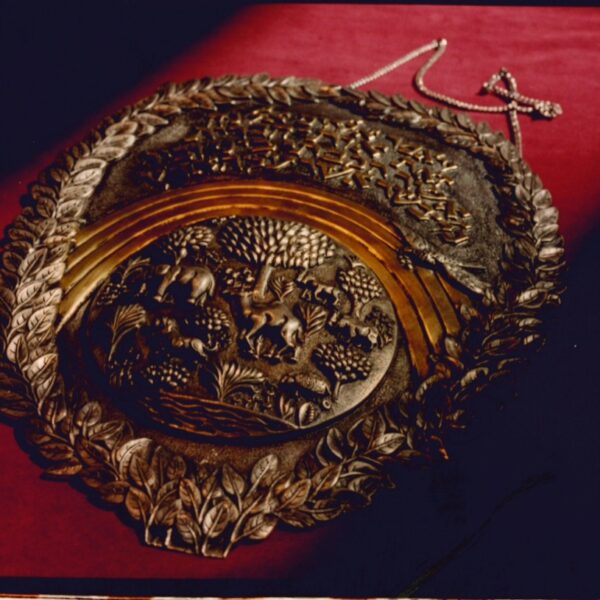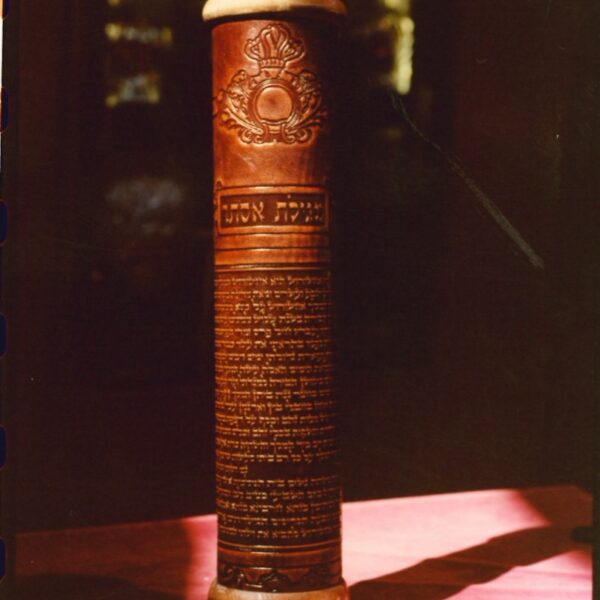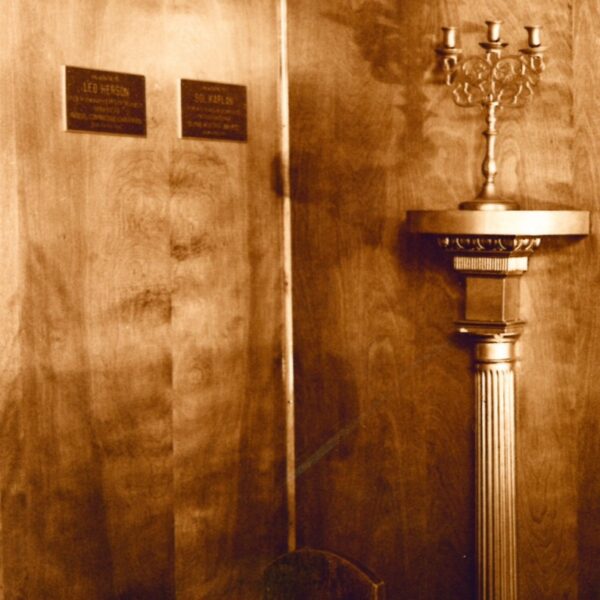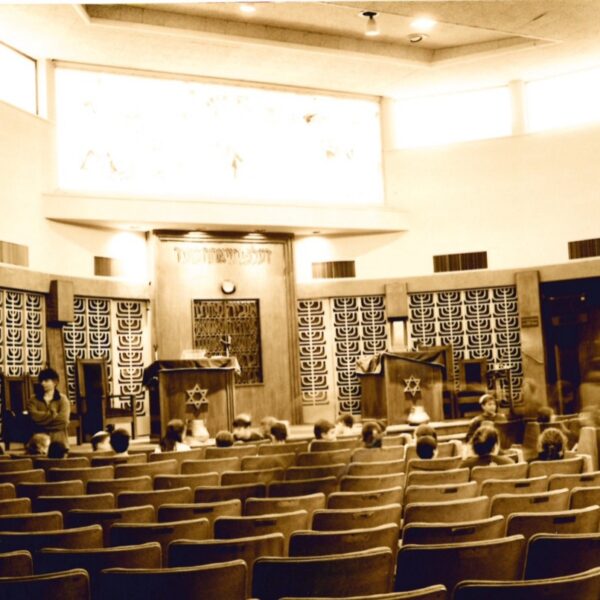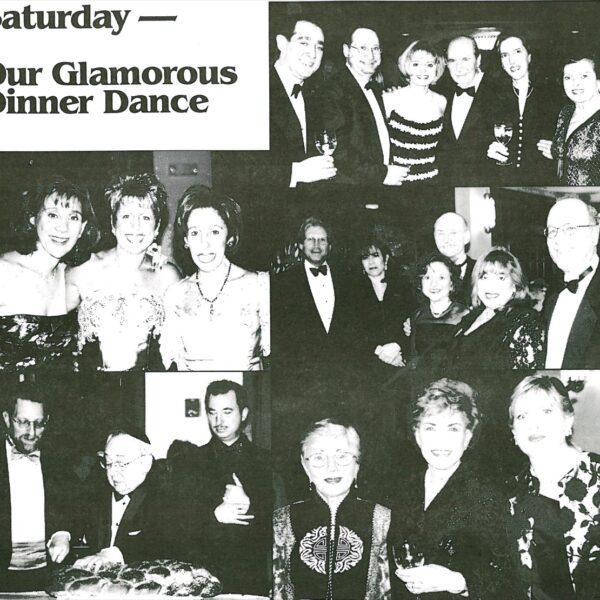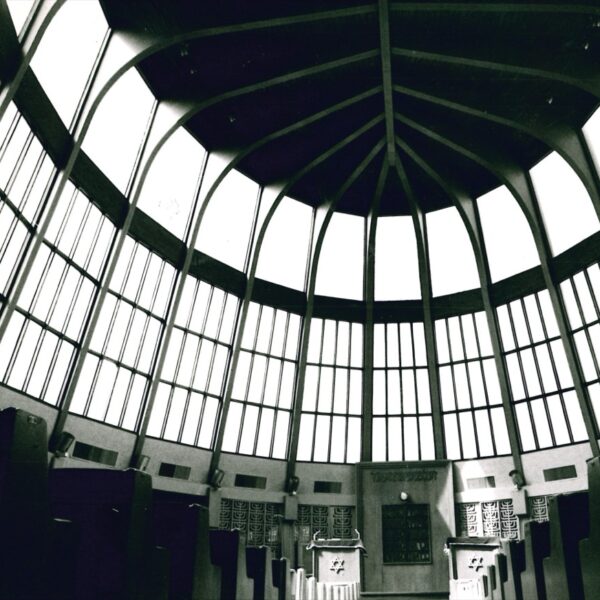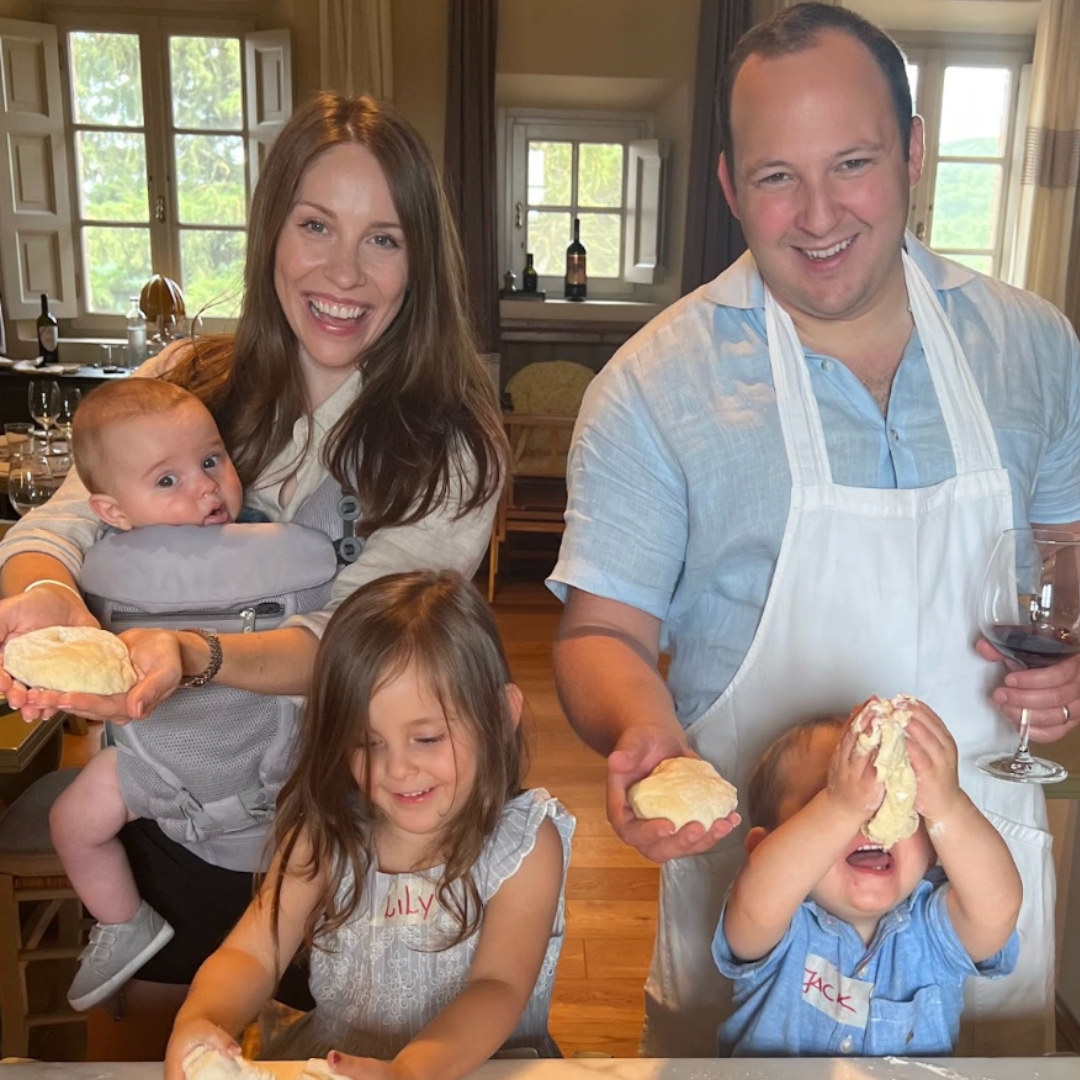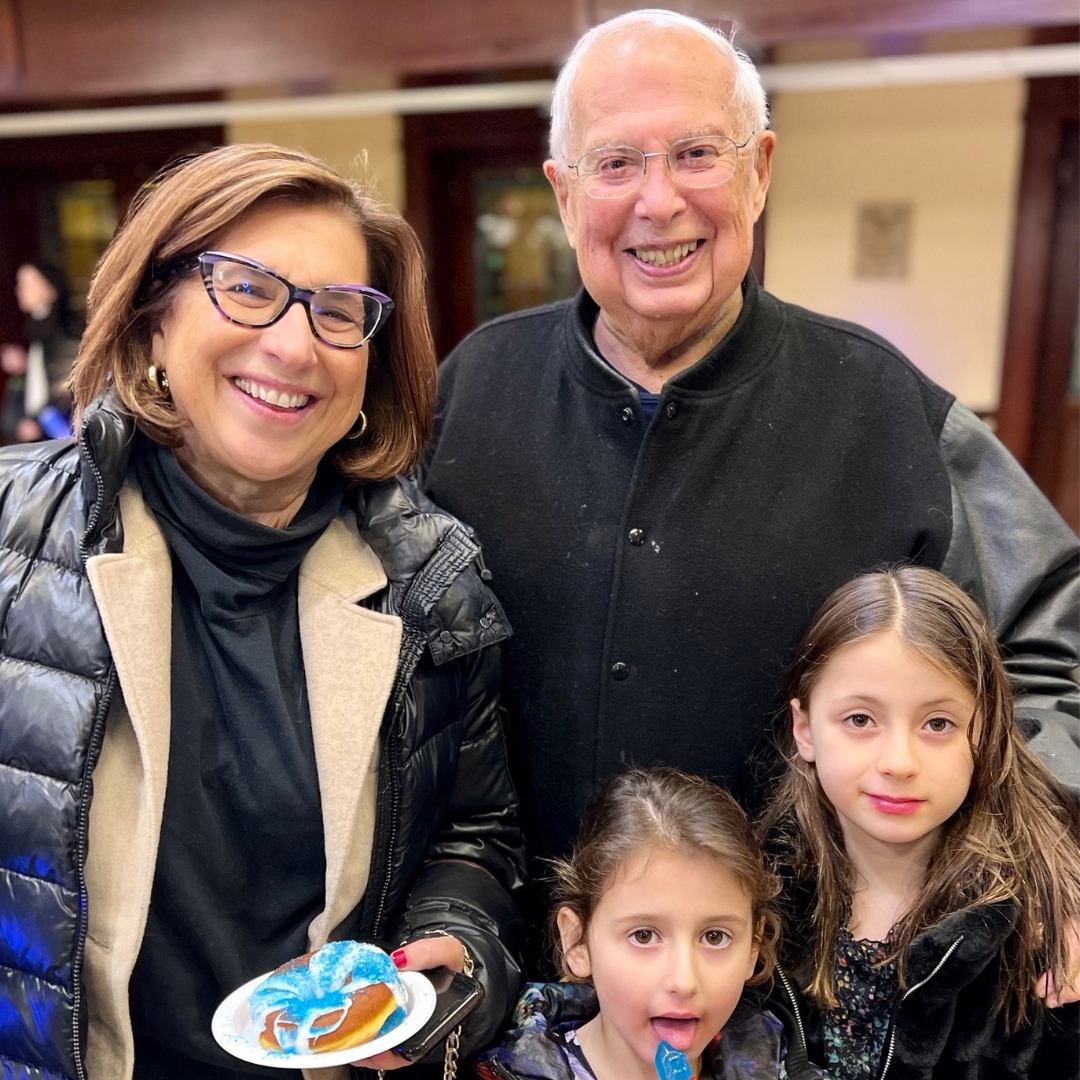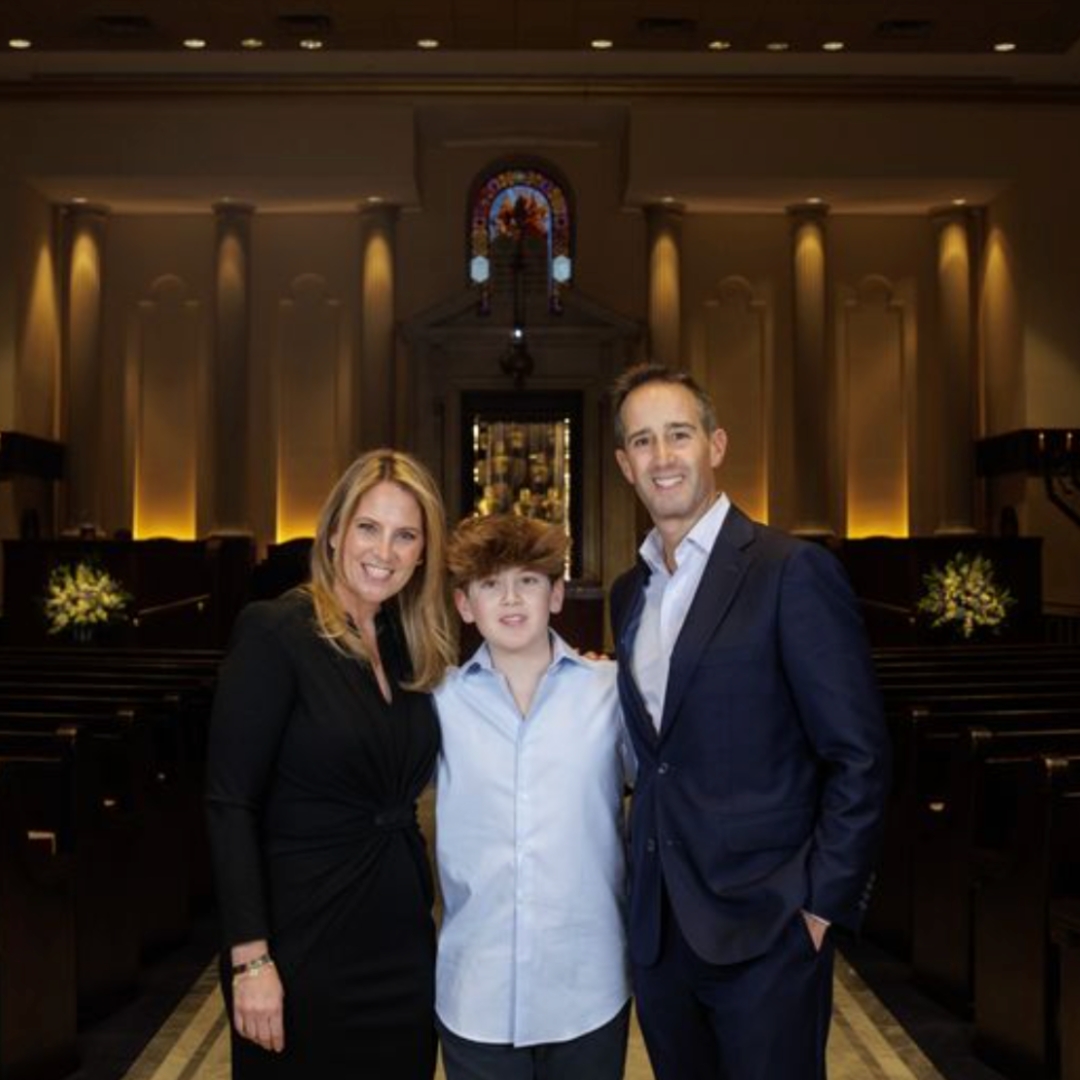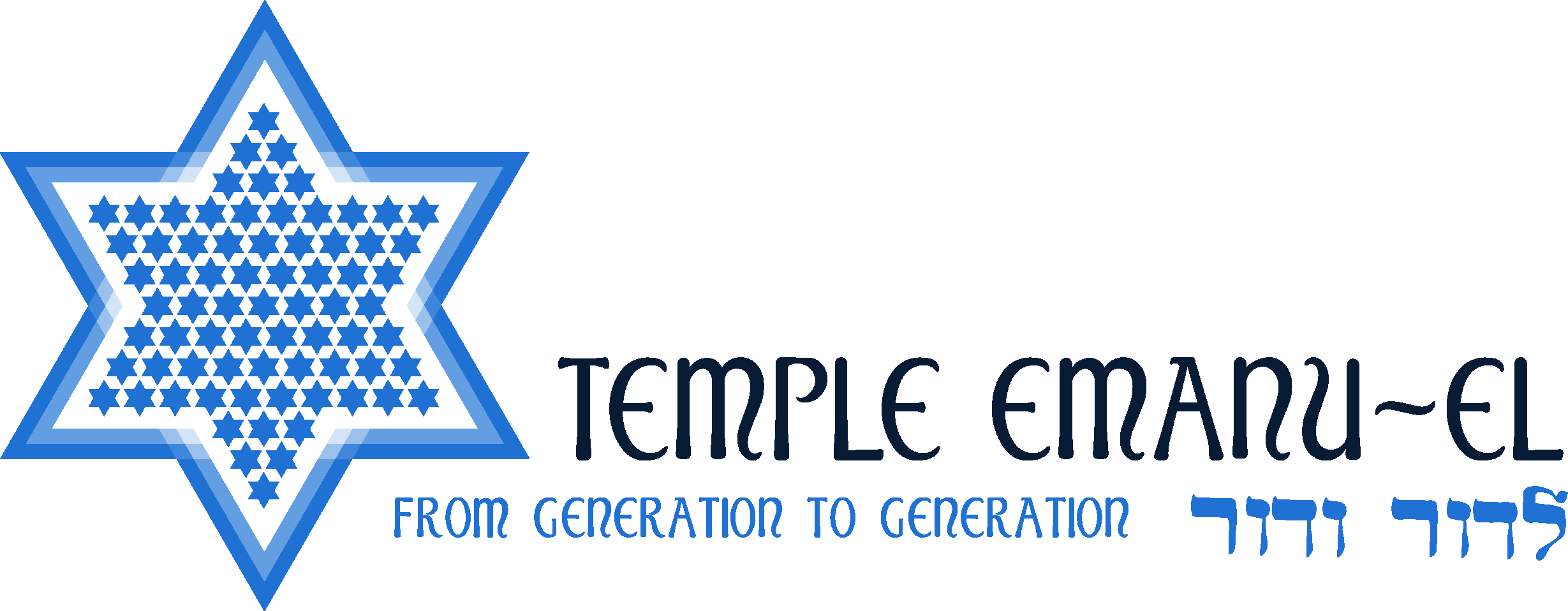The History of Temple Emanu-El
Important Moments in Temple Emanu-El History:
The first congregants of Temple Emanu-El form its initial charter.
Services are moved to the Plaza Theater to accommodate an expanding congregation; the Sisterhood is founded by Mrs. William Jacobus to begin community activities and raise money for a proposed building fund. Our first dinner dance, “First Masque and Civil Ball”, happens on March 10, 1929. The congregation moves again to larger facilities at the Busch Building on West Palisade Avenue, where the de Scherer, Jacobus, Vorsanger, Schechter and Bernstein families present and dedicate the first Torah scrolls, mantle, and ark, with the first pulpit gifted by the neighboring First Presbyterian Church.
Our first full time religious leader, Rabbi Zvi Anderman, takes his place and the Hebrew School begins with 25 students, at no charge to members. The First Communal Seder of the congregation is introduced through the initial publication of the Temple Emanu-El News in that year.
The Men’s Club begins. On May 2, the members produce a stage show called “Nertz to You” to serve as a fundraiser for the temple.
A permanent home is purchased for Temple Emanu-El at 173 Tenafly Road and services begin to be held there. Adjacent property at 153 Tenafly Road is donated by Henry Mandle for further expansion.
We purchase another new home at 147 Tenafly Road.
Temple Emanu-El becomes a member of the United Synagogue of America. Rabbi Arthur Hertzberg is appointed our spiritual leader. Groundbreaking ceremonies are held for a new temple to be designed by the architectural firm of Kelly & Gruzen.
Cantor Kurt Silbermann becomes the new Hazzan.
The official dedication of the synagogue and religious school takes place at 147 Tenafly Road. Although it is an era fraught with change, the congregation weathers many obstacles and continues to grow and spends the next decade moving into a new era of modern Judaic practice.
Upon the recommendation of Rabbi Hertzberg, a bat mitzvah is celebrated on a Saturday morning, ushering Temple Emanu-El into a new era of egalitarianism in our ritual practice.
A young, vibrant membership grows and Temple Emanu-El sees a new, active and engaged generation of congregants and leadership emerge. Rabbi Hertzberg serves as President of the American Jewish Congress for six years, as well as Vice President of the World Jewish Congress, while Cantor Silbermann is installed as President of the Cantors Assembly.
Rabbi Hertzberg assumes a Rabbi Emeritus role and for the next 10 years, Rabbi Stephen Listfield serves as spiritual leader. Mrs. Miriam Weidenfeld leads the religious school as our director, where for 10 years oversees the growth and development of one of the finest religious school programs in Bergen County. s Temple Emanu-El is now a major force among conservative Jewish congregations.
Cantor Israel Singer joins the temple as our Hazzan.
Rabbi Dr. Geoffrey Haber is the spiritual leader of Temple Emanu-El from 1996 until 2007. He creates diverse Adult Education programs that win Solomon Schechter Awards less than two years after joining our congregation.
Temple Emanu-El moves, again, one final time, from Englewood, New Jersey to our now and forever home in Closter.
In July 2007, David-Seth Kirshner becomes Temple Emanu-El’s head rabbi.
Today, we are a thriving and growing community, proud to be 900 members strong.
Like so much else in our world, Temple Emanu-El started as an idea, brought to life and realized by a group of young, dedicated individuals.
It was 1928. A few Jewish individuals in North Jersey met weekly with Rabbi Max Maccaby of the Jewish Institute of Religion. Together they would pray and engage in a dialogue over their desire to balance their increasingly modern religious observance with their Jewish heritage.
With support from Rabbi Steven S. Wise, together this group took the first steps to form what we would someday come to know as Temple Emanu-El by taking out a charter to incorporate the new synagogue. Their mission was not so different than the one we ourselves pursue today:
“To perpetuate the religious growth and development of Judaism and to interpret the teachings of Israel of the past in light of the present; to develop the strength and love of our faith in the hearts of our children and in every way to spread the ideals of Israel; to encourage social service, religious observance, and develop the moral, mental, and physical welfare of its members and families; and to maintain a center for the cultivation of Jewish thought and action.”
Over the course of the year, this small group of 25 families, who had been meeting for late Friday night services at Temple Ahavath Torah, was organized into Temple Emanu-El of Englewood. Services began to take place in the home of Ferdinand Vorsanger, the congregation’s first president, under the part-time direction of Rabbi Benjamin Schultz. As the temple continued to grow, services were moved to the Plaza Theater — the first time, but not the last, that Temple Emanu-El relocated to a larger venue to accommodate a thriving, engaged, multi-faceted Jewish community.
In the almost 100 years since Temple Emanu-El was founded, we’ve grown from 25 families to an incredible 900 membership units, today calling our gorgeous campus in Closter our home.
It is thanks to the indefatigable spirit of this community, we know that the next 100 years will only bring bigger and better things for Temple Emanu-El, as more Jews continue to find their home with us. Together we create a light that illuminates both in times of joy and in times of darkness.
